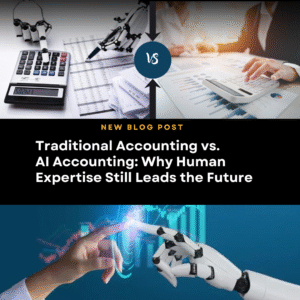The role of the CFO has evolved into more than financial management over the years. The CFO should be the master of strategies, an expert on risk management, and a business all-rounder. According to Deloitte’s CFO signal report for the second quarter of 2021, 65 percent of the CFOs favored taking on risks. To quote the Rwandan writer, Habyarimana, “Opportunity and risk come in pairs.” CFOs are the sounding boards for the ideas or decisions of the CEOs. They need to ace up their game by providing the financial viability, risk assessment, and return on investment on those.
Risk management and mitigation are essential attributes for a successful CFO. It is hence important to know what those terms mean. According to ‘Economic Times’, the definition of risk management is identifying the potential risks, assessing them, and taking measures to control or curb them. For example, before expanding a business to a new location, it is prudent to assess the business risks. This feasibility study helps the CFO to decide whether the business will thrive in the new location or not.
The word meaning of mitigation is the action taken to reduce the severity of something. Hence, Risk mitigation is a strategy that acknowledges the threat but works to lessen its impact. Consider the Tokyo Olympics 2020. The threat of the covid pandemic is the risk but measures like frequent testing to control it are in place.
I. Different risks faced by the businesses

In order to understand how the CFO manages and mitigates risk, it is important to look into the major risks faced by the businesses. They are:
- Financial risk
- Operational risk
- Technical risk
Each of the above risks has various subsets, like compliance risk, personnel risk, process risk, security risk, etc. The CFO must identify and analyze every risk to implement process controls. The role of the CFO in Enterprise Risk Management (ERM) is increasing in recent times. They have a powerful influence on the strategic decisions of the business and hence must know the various risk factors affecting it. Also, this awareness gives them an edge to implement necessary controls and review the same in periodic intervals. This check makes the business resilient even when they face the risk.
RELATED POST: Outsourcing Risk and Compliance Management – All in One Guide
II. Risk Management and Mitigation by CFOs
1. Risk management awareness to the entire staff
The evolved role of the CFO has an added responsibility to teach and learn. Every personnel must know the potential risks and the strategies planned by the C-suite employees. The CFO must be constantly learning about the changes that happen around the world. Though risk management has to be inculcated as a business culture for effective control of the risks.
2. Devise a plan to manage or mitigate risk.
The risk management plan or risk mitigation plan will vary according to the business, location, or socio-economic situation. The basic steps for devising the plan are:
a. Identify the risks
As per the survey by Wall Street Journal on global CFOs, they see a growth in the risks and foresee its increase in the future. It becomes even more vital for businesses to identify the risks.
b. Assess the risks
The CFO must keep in mind the past challenges and triumphs of the business. Along with that, strategic decision-making is possible only if the CFO can foresee future challenges and opportunities. Every risk needs to be evaluated.
c. Prioritize and analyze the risks
Based on the likelihood to occur and the severity of the impact, prioritize the risk. This needs to be communicated across the business for effective risk management. They should analyze each risk based on a cost-to-benefit basis. Also, this will help in deciding whether to avoid, reduce, transfer or accept the risk.
d. Constant monitoring
Periodic review and monitoring of the risks lead to effective risk management.
3. Strategic placement of experts to respond to the risks

The CFO must assign key roles across departments to respond with quick action, in case a risk happens. Also, this will help in minimizing the impact of the risk on the business. These experts in key areas help reduce the work stress of strategic and tactical concerns.
4. Visibility is the key
As mentioned earlier, CFOs give importance to past performance and extrapolate to foresee future risks and opportunities. Therefore, this visibility in the forward-looking responsibilities is an important factor in successful risk management. Whether it is digitization and technology or finance, the Dow Jones survey on global CFOs revealed that visibility matters in effectively managing risks.
5. Cross-functional communication.
The former CFO of Netflix, David Wells has reportedly said, ”If you are going to be competitive in today’s business environment, you have to be cross-functional, connected, and aligned.” This shows that it is not healthy for the risk-associated data to be siloed in one department.
Risk is on the rise and so is risk management in business. There is no single way to manage the risks, as they are dynamic with the internal and external business environment. Enterprise Risk Management (ERM) is coming under the scope of the role of CFO. The essence of it all is in this opinion of Mr. Daniel Wagner, author, and CEO of countryrisks.com, “Armed with the right set of tools, procedures, knowledge, and insight, light can be shed on variables that lead to risk, allowing us to manage them.” The Enterprise Risk Management and virtual CFO services of Diligen have time and again proven their competency. These services are the future of the business.




